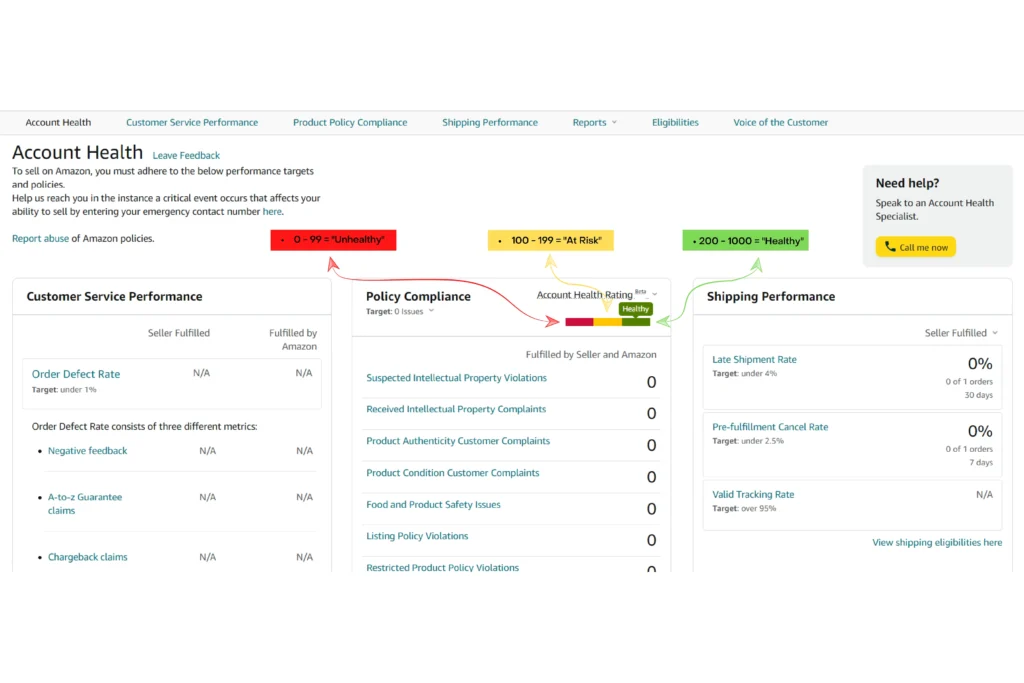What is Amazon Account Health Rating?
The Amazon Account Health Rating is a score indicating a seller’s performance on Amazon. It ranges from 1 to 1000: 200-1000 (Healthy), 100-199 (At Risk), and 99 or below (Unhealthy). It’s determined by factors like order defect rate, late shipment rate, and valid tracking rate.
Amazon Account Health Metrics Consist of Three Main Parts:
Customer Service Performance: This measures customer satisfaction, reflected by the “Order Defect Rate” which should be below 1%. It includes negative feedback, A-to-Z claims, and chargeback claims.
Policy Compliance: This involves respecting intellectual property, product safety, and not selling restricted items.
Shipping Performance: This involves three aspects:
- Late Shipment Rate: Keep it under 4%.
- Pre-fulfillment Cancel Rate: Aim for under 2.5%.
- Valid Tracking Rate: Aim for 95% or more.
Tips to Improve Amazon Account Health Rating:
Transparent Listings: Ensure accurate and clear product descriptions to prevent customer dissatisfaction and negative feedback.
Swift Customer Responses: Respond promptly to customer messages, and their concerns to maintain a positive rating.
Punctual Shipping: Fulfill orders before the promised dates to avoid late deliveries.
Quality Assurance: Prioritize offering high-quality products to secure positive reviews and prevent negative feedback from unhappy customers.
Compliance with Amazon’s Guidelines: Familiarize yourself with Amazon’s rules and policies to guarantee fair treatment of customers and avoid unintentional rule violations.
Follow these tips to boost your Amazon Account Health Rating.
FAQ’s
Identify the root causes of your low AHR (e.g., high ODR, negative feedback), set achievable goals for improvement, and outline specific steps you’ll take to address each issue.
Consistently low ODR (below 1%), minimal negative feedback, high customer satisfaction ratings, and adherence to Amazon’s policies.
- If your AHR is low and you’re struggling to improve it despite your efforts.
- If you face complex compliance issues or policy violations.
- If you need help developing a strategic plan for long-term AHR management and account health.
- Accurately forecast demand and increase inventory levels well in advance.
- Optimize your listings and promotions for seasonal trends.
- Proactively communicate with customers about potential shipping delays.












